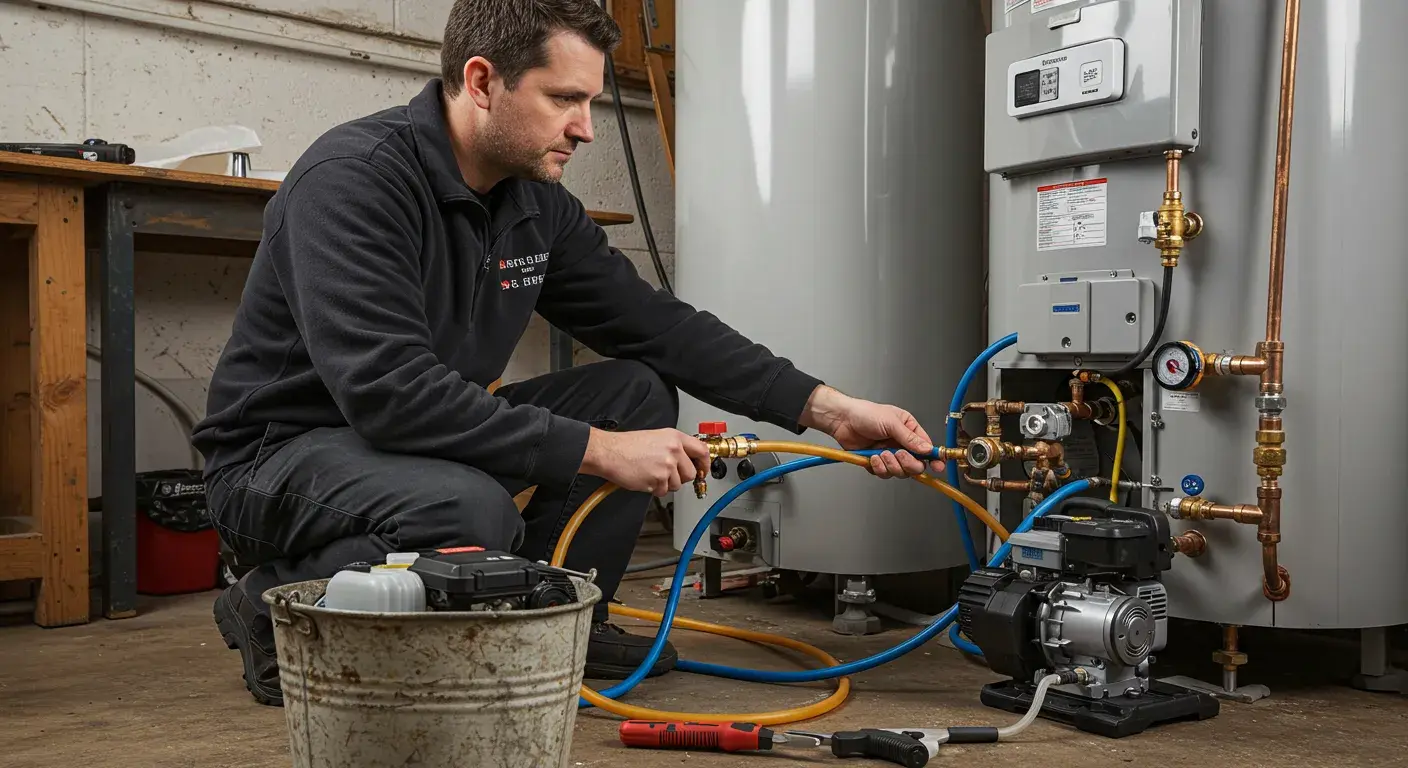
The Benefits of Choosing a Tankless Water Heater
Choosing a tankless water heater comes with a range of benefits that contribute to both convenience and cost savings over time.
- Endless Hot Water Supply: One of the most appealing advantages is the ability to have a continuous flow of hot water. Since the water is heated as needed, you don't run out of hot water, even during periods of high demand, such as simultaneously running the dishwasher, washing machine, and taking a shower.
- Energy Efficiency: Tankless units heat water only when it's required. Traditional tanks constantly heat and reheat a large volume of water, leading to standby energy losses. By eliminating this, tankless systems can significantly reduce energy consumption and lower your utility bills.
- Space Saving: Tankless water heaters are considerably smaller than bulky storage tanks and can often be mounted on a wall, freeing up valuable floor space in a utility closet, garage, or basement.
- Longer Lifespan: On average, tankless water heaters tend to last longer than traditional tank units, often reaching 20 years or more with proper maintenance.
- Reduced Risk of Leaks: Without a large tank constantly holding water, the risk of a catastrophic leak and resulting water damage is significantly reduced.
While the initial cost of a tankless unit and its installation might be higher than a traditional water heater, the long-term savings on energy bills and the extended lifespan can offset this investment over time.
Tankless Water Heater Installation and Replacement
Installing a tankless water heater is a complex process that typically requires professional expertise. The installation involves connecting the unit to your home's water lines, electrical system or gas line, and often requires modifications to venting. Unlike a simple swap of a tank unit, installing a tankless system often necessitates upgrades to gas lines, electrical circuits, or changes to plumbing configurations to accommodate the higher flow rates and venting requirements.
When considering water heater installation & replacement in Pomona, CA, especially when transitioning to a tankless system, it's important to work with experienced technicians. They can assess your home's specific needs, determine the appropriate size and type of tankless unit for your hot water demands, and ensure the installation is performed safely and according to local codes. Proper installation is crucial for the efficiency, safety, and longevity of your new tankless system. Whether you are replacing an old tank heater or installing a tankless unit in a new construction, professional installation ensures the system performs optimally from day one.
Tankless Water Heater Repair Services
Like any appliance, tankless water heaters can occasionally encounter issues that require repair. While they are known for their reliability, problems can arise due to mineral buildup, ignition failures, or electronic component issues. Common indicators that your tankless water heater might need water heaters repair include:
- Fluctuating water temperature.
- Lack of hot water.
- Error codes displayed on the unit.
- Unusual noises coming from the unit.
- Reduced hot water flow.
Ignoring these signs can lead to further damage and potentially more costly repairs down the line. Professional technicians specializing in tankless units have the diagnostic tools and knowledge to identify the root cause of the problem quickly and efficiently. They can handle various repairs, from cleaning internal components to replacing faulty parts, restoring your unit to proper working condition. Prompt water heaters repair not only fixes the immediate issue but can also prevent the problem from escalating, extending the lifespan of your system.
Maintaining Your Tankless Water Heater
Regular maintenance is vital for ensuring your tankless water heater operates efficiently and lasts for its intended lifespan. One of the most critical maintenance tasks for tankless units, particularly in areas with hard water like Southern California, is flushing the system to remove mineral buildup. Minerals like calcium and magnesium, present in hard water, can accumulate on the heat exchanger over time, reducing efficiency, restricting flow, and potentially damaging the unit.
A professional maintenance service typically includes:
- Flushing the system with a descaling solution to remove mineral deposits.
- Checking the ignition system and burner assembly.
- Inspecting water and gas connections for leaks.
- Cleaning or replacing filters if applicable.
- Verifying the unit's overall operation and safety features.
Scheduling annual maintenance can help prevent common issues, ensure optimal performance, maintain energy efficiency, and identify potential problems before they lead to breakdowns. Regular service, sometimes included as part of a Power Club membership for comprehensive home system care, is an investment that pays off in reliable hot water and a longer-lasting system.
Understanding How Tankless Water Heaters Work
The fundamental principle behind a tankless water heater is simple: heat water instantly as it flows through the unit. When a hot water tap is opened, a flow sensor detects the movement of water. This signals the control unit to activate the heating element.
For gas tankless heaters, a gas burner ignites, and its heat is transferred to the water as it passes through a heat exchanger. The water temperature is monitored, and the burner modulates its output to maintain the desired temperature set on the unit.
For electric tankless heaters, high-powered electric heating elements heat the water as it flows through. These require a significant amount of electrical power, often necessitating dedicated high-amperage circuits.
The heated water then travels through your home's plumbing system to the point of use. Once the hot water demand stops (i.e., the tap is turned off), the flow sensor detects the lack of water movement, and the heating process ceases. This on-demand heating mechanism is the core reason for their energy efficiency compared to systems that store and constantly heat water. Understanding this process helps homeowners appreciate why proper sizing based on flow rate and temperature rise is critical during installation to ensure sufficient hot water supply, especially when multiple fixtures are used simultaneously.

